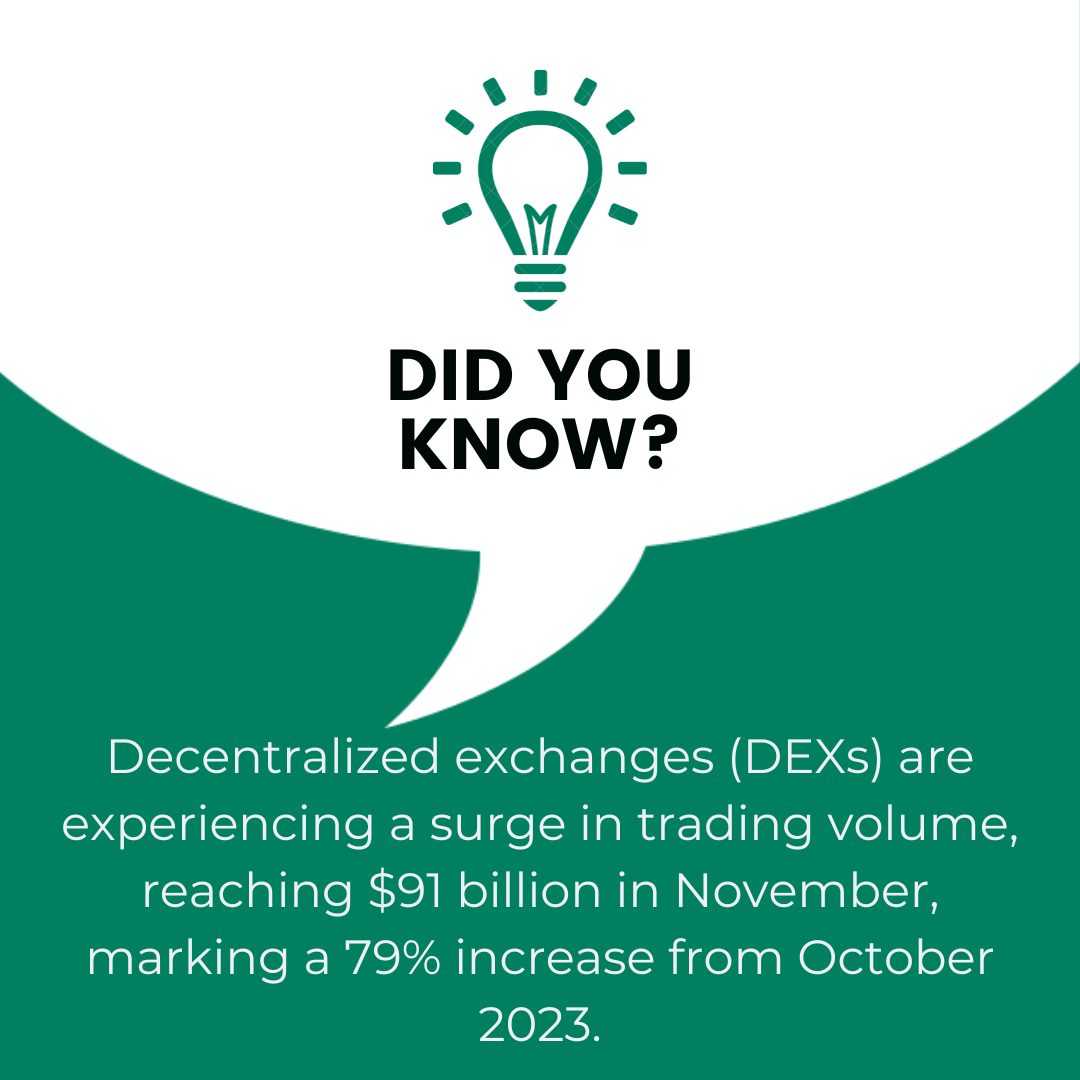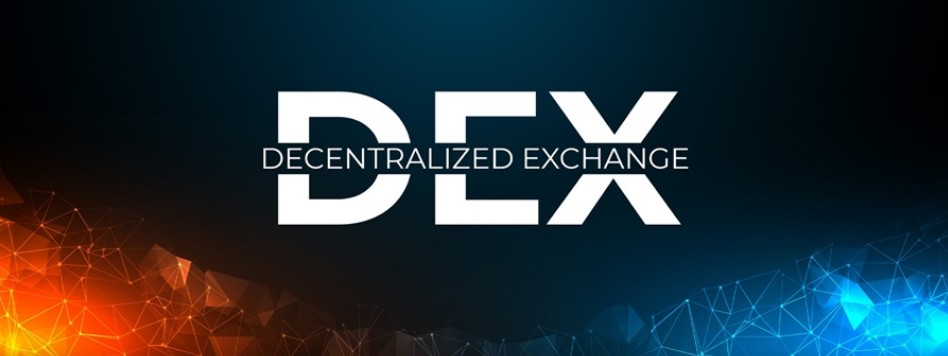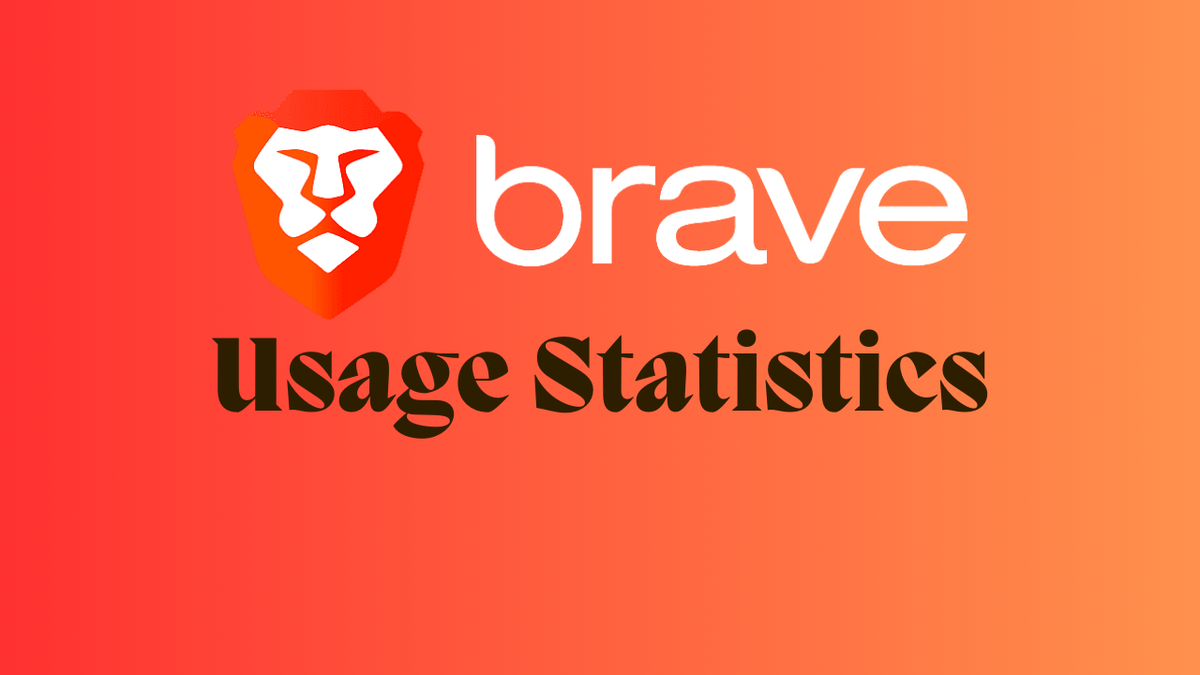Centralized (CEX) vs Decentralized Exchange(DEX) Usage Statistics 2024

As of April 2024, the Centralized Exchange (CEX) market cap stands at $113 billion, with an anticipated 2.0% change. Conversely, the Decentralized Exchange (DEX) market cap is currently at $29.1 billion, with an expected 7.4% change for the same period.
They have been instrumental in facilitating the widespread acceptance of cryptocurrency by governments, businesses, and institutions globally.
To understand the adoption rates of CEXs compared to decentralized exchanges (DEXs), let's delve deeper into their dynamics.
Table of Contents
- CEX vs DEX Statistics: Highlights
- Brief History of CEX and DEX
- Top 10 CEX vs DEX User Statistics
- How Many CEX vs DEX Are There?
- CEX vs DEX MarketCap
- CEX vs DEX by Region
- CEX vs DEX by weekly visitors
- Updates in March/April 2024
- CEX vs DEX Valuation And Funding
- Cost to Run and Revenue Model
- Limitations of CEX vs DEX
- Job & Labor Market Impacts
- Wrap Up
CEX vs DEX Statistics: Highlights
- Centralized exchanges (CEXs) dominate crypto transactions, processing nearly 99% of all transactions.
- Binance holds the top spot among exchanges according to CoinMarketCap score, with a score of 9.9, followed by Coinbase with a score of 8.2.
- Binance reported a 24-hour trading volume of $40.8 billion as of March 14, 2024.
-The last reported 24-hour trading volume of the Binance exchange was $40,800,116,391, as of March 14, 2024, according to coinmarketcap.com.
- Binance attracts over 19 million weekly visitors, making it the top CEX in terms of average weekly visitors. OKX, the next highest, receives about one-third of this traffic.
Decentralized exchanges (DEXs) are experiencing a surge in trading volume, reaching $91 billion in November, marking a 79% increase from October 2023.
This growth reflects a trend of DEXs gaining traction over centralized exchanges. Currently, DEXs account for 16.7% of spot trade volume, up from 10.8% in September.
Uniswap leads the DEX market in both trading volume and user numbers. Hayden Adams, the founder of Uniswap, recently announced on Twitter that Uniswap surpassed Coinbase in daily volume for the ether/U.S. dollar trading pair, with approximately $2.48 billion versus Coinbase's ~$1.1 billion.
Brief History of CEX and DEX
Centralized cryptocurrency exchanges (CEXs) have evolved significantly since the inception of Bitcoin in 2009.
The inception of decentralized exchanges (DEXs) traces back to 2014, with the introduction of the NXT Asset Exchange. Although other projects like Counterparty DEX and Block DX followed suit, they didn't gain widespread adoption.
The period of the ICO boom in 2017-2018 witnessed the emergence of numerous new cryptocurrencies.
These assets found a trading ground on burgeoning DEXs like EtherDelta, IDEX, and DDex. Ethereum served as the primary blockchain for operating DEXs during this time, with most tokens being ERC-20 compliant.
Top 10 CEX vs DEX User Statistics
For Centralized Exchange
- Centralized exchanges (CEXs) dominate crypto transactions, processing nearly 99% of all transactions.
- Binance holds the top spot among exchanges according to CoinMarketCap score, with a score of 9.9, followed by Coinbase with a score of 8.2.
- Binance reported a 24-hour trading volume of $40.8 billion as of March 14, 2024.
-The last reported 24-hour trading volume of the Binance exchange was $40,800,116,391, as of March 14, 2024, according to coinmarketcap.com.
- Binance attracts over 19 million weekly visitors, making it the top CEX in terms of average weekly visitors. OKX, the next highest, receives about one-third of this traffic.
- Binance leads in average liquidity with a score of 881, followed by Coinbase with a score of 762.

- The CoinMarketCap website lists 242 CEXs, with a total 24-hour trading volume exceeding $1 trillion.
- The top 10 centralized exchanges account for approximately 80% of all crypto trading activities.
- The top 4 CEXs contribute to over 60% of daily crypto trades.
- Coinbase boasts the largest user base among centralized exchanges and is particularly popular in the US.
- eToro, known for stock trading, also supports crypto trading, with over 60% of its profits coming from crypto in 2021.
For Decentralized Exchange
Decentralized exchanges (DEXs) are experiencing a surge in trading volume, reaching $91 billion in November, marking a 79% increase from October 2023.
This growth reflects a trend of DEXs gaining traction over centralized exchanges. Currently, DEXs account for 16.7% of spot trade volume, up from 10.8% in September.
Uniswap leads the DEX market in both trading volume and user numbers. Hayden Adams, the founder of Uniswap, recently announced on X(twitter) that Uniswap surpassed Coinbase in daily volume for the ether/U.S. dollar trading pair, with approximately $2.48 billion versus Coinbase's ~$1.1 billion.
- Decentralized Finance (DeFi) saw a peak of 7.5 million unique users in late 2021 but has since experienced a decline in figures.
- A network crawling code is used to measure unique user addresses involved in buying or selling specific DeFi projects, such as Uniswap and Aave.
- DeFi surged from roughly 90,000 users in early 2020 to 4.28 million by the end of 2021.
- Decentralized exchanges (DEXs) have seen significant growth, with over $720 billion traded on DEXs in the past 12 months.
- Coingecko reports approximately 370 decentralized crypto exchanges currently in existence.
- The top ten DEXs contribute to over 75% of the total DEX trading volume.
- UniSwap, including various versions and platforms like V2, V3, Abitrum One, Polygon, and Optimism, dominates the DEX space, accounting for over half (55%) of total DEX volume.
How Many CEX vs DEX Are There?
The exact number of cryptocurrency exchanges is challenging to determine as they don't require registration with any centralized authority. An estimated 504 cryptocurrency exchanges exist currently, but this number is subject to change.
CoinMarketCap tracks 259 of these exchanges, while others are still in their startup phase. There are 18,998 markets available for trading crypto according to CoinMarketCap, representing different trading pairs across 259 exchange platforms.

On average, each exchange platform offers around 73 markets for trading. Most exchanges are centralized (CEX), while some are decentralized (DEX).
Also read How to Use DEXs In 2024
CEX vs DEX MarketCap
Here is a breakdown of the top 10 CEX by MarketCap Data as at April 2024:
Ranking | CEX Name | Daily Market volume. |
1 | Binance | $25.7B |
2 | Coinbase | $2.8B |
3 | Bybit | $3.99B |
4 | OKX | $3.79B |
5 | Upbit | $4.1B |
6 | Kraken | $1.1B |
7 | Kucoin | $914M |
8 | Gate.io | $3.6B |
9 10 | HTX Bitfinex | $2.3B $341M |
Here is a breakdown of the top 10 DEX by MarketCap Data as at April 2024:
Ranking | DEX Name | Daily MarketCap |
1 | Uniswap v3 (Ethereum) | $ 1.7B |
2 | dYdX v4 | $ 1.1B |
3 | Jupiter | $ 1B |
4 | Raydium | $ 631M |
5 | APX v2 (BSC) | $ 577M |
6 | Orca | $514M |
7 | Curve (Ethereum) | $453M |
8 | Kine Protocol | $436M |
9 | Uniswap v3 (Arbitrum) | $431M |
10 | dYdX | $384M |
Sources: chainalysis, DefiLama CMC
CEX vs DEX by Region
Here's a breakdown of regions with the most CEX users as at 2023:
Ranking | Regions |
1 | Central & Southern Asia and Oceania (India) |
2 | North America( US) |
3 | Sub-Saharan Africa(Nigeria) |
4 | Central & Southern Asia and Oceania( Vietnam) |
5 | Eastern Europe( Ukraine) |
6 | Central & Southern Asia and Oceania( Philippines) |
7 | Central & Southern Asia and Oceania ( Pakistan) |
8 | Central & Southern Asia and Oceania( Thailand) |
| 9 | Latin America(Brazil) |
10 | Eastern Asia( China) |

Here's a breakdown of regions with the most DEX users as at 2023:
Ranking | Region |
1 | Central & Southern Asia and Oceania(India) |
2 | North America ( US) |
3 | Central & Southern Asia and Oceania( Vietnam) |
4 | Sub-Saharan Africa (Nigeria) |
5 | Central & Southern Asia and Oceania (Indonesia ) |
6 | Central & Southern Asia and Oceania(Thailand) |
7 | Central & Southern Asia and Oceania( Philippines) |
8 | Central, Northern, & Western Europe (UK) |
9 | Eastern Europe (Russia) |
10 | Eastern Europe(Ukraine) |
Sources: chainalysis, DefiLama CMC
CEX vs DEX by weekly visitors
Here's a breakdown of weekly visitors into the top 10 DEX as at April 2024:
Ranking | DEX | Weekly Visitors |
1 | Uniswap v3 (Ethereum) | 10.5M |
2 | Jupiter | 12.7M |
3 | Uniswap v3 (Arbitrum) | 9.1M |
4 | Raydium | 6.8M |
5 | PancakeSwap v2 (BSC) | 6.5M |
6 | Orca | 1.1M |
7 | Curve (Ethereum) | 408.9K |
8 | DYdX v4 | 231.6K |
9 | APX v2 (BSC) | 39.6K |
10 | Kine Protocol | 17K |

Here's a breakdown of weekly visitors into the top 10 CEX as at Apr 2024:
Ranking | CEX | Weekly visitors |
1 | Binance | 21,025,791 |
2 | Coinbase | 11,679,122 |
3 | Bybit | 8,125,613 |
4 | OKX | 6,706,887 |
5 | Upbit | 3,362,506 |
6 | Gate.io | 3,256,071 |
7 | Kucoin | 2,708,191 |
8 | Kraken | 2,260,196 |
9 | HTX | 4,144,334 |
10 | Bitfinex | 251,800 |
Sources: chainalysis, DefiLama CMC
Updates in March/April 2024
Bitcoin's recent all-time high has led to a surge in centralized exchange (CEX) crypto trading volume, reaching a record $9.12 trillion according to CCData. Despite this, the market share of crypto derivatives has seen a decline.
Notably, Binance dominates the spot trading volume on centralized exchanges, accounting for 38% of the total.
March witnessed significant events in the crypto market following Bitcoin's peak, with various narratives emerging such as AI coins, the meme coin boom in Solana and Base networks, and the rise of real-world assets tokens.
Uniswap has achieved a remarkable milestone by surpassing $2 trillion in trading volume, marking a significant achievement in the decentralized finance (DeFi) sector.
The platform's rapid growth trajectory has seen it surpassing the second trillion-dollar mark in less than 24 months, solidifying its position as a leader in the decentralized exchange landscape.
Uniswap's emergence as a strong contender against major centralized exchanges challenges established norms and drives innovation in the crypto market.
Since its inception in November 2018, Uniswap has experienced impressive growth, establishing itself as a dominant force in the DeFi ecosystem. Its journey to reach $2 trillion in trading volume reflects its unparalleled momentum and widespread appeal.
Notably, achieving the second trillion-dollar milestone in less than 24 months showcases Uniswap's rapid acceleration and exponential growth. This accomplishment underscores its unrivaled position in facilitating decentralized trading across various blockchains, including Ethereum, Polygon, and Optimism.
CEX vs DEX Valuation And Funding
CEX (Centralized Exchange) and DEX (Decentralized Exchange) platforms differ significantly in their valuation and funding approaches.

CEX Valuation and Funding:
- Centralized exchanges typically have higher valuations due to their established user base, liquidity, and revenue streams.
- Funding for CEX platforms often comes from venture capital firms, private investors, or through initial coin offerings (ICOs).
- Valuation is influenced by factors such as trading volume, user base, revenue generation, and market share.
- CEX platforms may offer equity to investors or token-based incentives tied to the platform's utility or revenue.
DEX Valuation and Funding:
- Decentralized exchanges generally have lower valuations compared to centralized counterparts due to their decentralized nature and often smaller user bases.
- Funding for DEX platforms may come from community donations, grants, or token sales.
- Valuation is driven by factors such as the adoption of the platform, liquidity pools, trading volume, and the value of the native token.
- DEX platforms often issue tokens that serve as governance rights or provide incentives for liquidity providers and traders.
Overall, while CEX platforms tend to have higher valuations and traditional funding sources, DEX platforms rely more on community-driven funding mechanisms and may have lower valuations despite their innovative approaches to trading.
Cost to Run and Revenue Model
The costs to run and revenue models of CEX and DEX platforms differ based on their centralized or decentralized nature.
Costs to Run:
CEX:
- Infrastructure: CEX platforms require robust servers, databases, and security systems to handle high trading volumes and ensure data protection.
- Security: Implementing advanced security measures, including encryption, firewalls, and threat detection systems, is essential to protect user funds and data from cyber threats.
- Compliance: CEX platforms need to comply with regulatory requirements, which may involve legal fees, licensing costs, and ongoing compliance efforts.
- Customer Support: Providing 24/7 customer support to address user inquiries, resolve issues, and ensure smooth trading operations adds to operational costs.
- Marketing: Promotional activities, advertising, and user acquisition efforts contribute to marketing expenses.
DEX:
- Development: Building and maintaining the decentralized protocol, smart contracts, and user interfaces require ongoing development efforts.
- Security Audits: Conducting regular security audits to identify and address vulnerabilities in the smart contracts and platform infrastructure is crucial.
- Liquidity Incentives: DEX platforms may offer liquidity mining rewards or incentives to attract liquidity providers, which incur costs.
- Governance: Supporting decentralized governance mechanisms, such as voting and decision-making processes, involves associated operational expenses.
- Community Engagement: Engaging with the community through forums, social media, and events to foster adoption and participation also requires resources.
Revenue Models:
CEX:
- Trading Fees: Charging users fees for executing trades, including maker and taker fees based on trading volume, is a primary revenue source for CEX platforms.
- Listing Fees: CEX platforms may charge projects fees to list their tokens or cryptocurrencies on the exchange.
- Withdrawal Fees: Charging fees for withdrawing funds from the platform adds to revenue streams.
- Premium Services: Offering premium features, such as advanced trading tools, margin trading, and access to exclusive markets, for a subscription or fee generates additional revenue.
DEX:
- Trading Fees: DEX platforms can charge users trading fees similar to CEX platforms, although fee structures may differ.
- Protocol Fees: Some DEX protocols may collect fees on decentralized trades executed through the protocol, which are distributed to liquidity providers or token holders.
- Governance Tokens: Issuing governance tokens allows DEX platforms to capture value from platform growth and activity through token appreciation or staking mechanisms.
- Liquidity Mining Rewards: Generating revenue from protocol fees or inflationary mechanisms to fund liquidity mining rewards for liquidity providers.
- Partnerships and Integrations: Collaborating with decentralized finance (DeFi) projects or integrating with other platforms can create revenue-sharing opportunities for DEX platforms.
Overall, while both CEX and DEX platforms incur operational costs, their revenue models vary based on their business models, target audience, and competitive landscape within the cryptocurrency market.
Limitations of CEX vs DEX
Centralized exchanges (CEX) and decentralized exchanges (DEX) each have their own set of limitations:
Limitations of CEX:
- Centralization: CEX platforms are centralized, meaning they are controlled by a single entity, which introduces a single point of failure and potential security risks.
- Custodial Risk: Users on CEX platforms typically deposit their funds into exchange-controlled wallets, exposing them to custodial risk in the event of exchange hacks or insolvency.
- Regulatory Dependence: CEX platforms are subject to regulatory scrutiny and may face legal challenges or restrictions in certain jurisdictions, affecting their operations and user experience.
- Lack of Privacy: CEX platforms often require users to undergo identity verification procedures, compromising user privacy and anonymity.
- Limited Asset Selection: CEX platforms may have restrictions on the listing of certain assets due to regulatory concerns or business decisions, limiting users' trading options.
Limitations of DEX:
- Liquidity Challenges: DEX platforms often struggle with liquidity issues, as trading volume and liquidity depth may be lower compared to centralized counterparts, leading to higher slippage and less favorable trading conditions.
- User Experience: DEX platforms may have a steeper learning curve and less intuitive user interfaces compared to centralized exchanges, potentially hindering adoption among less tech-savvy users.
- Network Congestion: DEX platforms operating on blockchain networks, such as Ethereum, can be susceptible to network congestion and high gas fees during periods of high demand, impacting transaction speed and cost.
- Limited Asset Support: Some DEX platforms may have limited support for certain assets or lack cross-chain interoperability, restricting users from trading a wide range of cryptocurrencies.
- Smart Contract Risks: DEX platforms rely on smart contracts to facilitate trading, exposing users to risks associated with smart contract vulnerabilities, bugs, or exploits, which can result in financial losses.
Overall, while CEX platforms offer convenience, liquidity, and regulatory compliance, they are susceptible to centralization and custodial risks.
On the other hand, DEX platforms provide greater decentralization and user control but face challenges related to liquidity, user experience, and smart contract security.
Users should consider these limitations when choosing between CEX and DEX platforms based on their preferences and risk tolerance.
Job & Labor Market Impacts
The emergence of decentralized exchanges (DEX) and centralized exchanges (CEX) in the cryptocurrency industry can have several impacts on the job and labor market:
- Job Creation: The growth of both DEX and CEX platforms creates job opportunities in various roles such as software development, blockchain engineering, cybersecurity, customer support, marketing, and legal compliance. Companies operating these exchanges require skilled professionals to develop, maintain, and secure their platforms, as well as to ensure regulatory compliance.
- Technical Skills Demand: Both DEX and CEX platforms rely on blockchain technology and smart contracts. As a result, there is a growing demand for individuals with expertise in blockchain development, cryptography, decentralized finance (DeFi), and smart contract auditing. Job seekers with these technical skills may find opportunities in the cryptocurrency industry.
- Regulatory Compliance: CEX platforms, in particular, often face regulatory challenges and compliance requirements imposed by governments and financial authorities. As a result, there is a need for legal experts, compliance officers, and regulatory specialists to navigate the complex regulatory landscape and ensure that exchanges operate within the boundaries of the law.
- Market Liquidity and Trading Volume: The availability of trading pairs and liquidity on DEX and CEX platforms can impact trading activity and trading volume in the cryptocurrency market. High trading volumes may lead to increased demand for customer support representatives, traders, analysts, and risk management professionals to handle the influx of transactions and inquiries.
- Decentralization vs. Centralization: The debate between DEX and CEX platforms extends beyond technical and regulatory considerations to philosophical and ideological differences regarding decentralization. While DEX platforms prioritize user control and privacy, CEX platforms offer convenience, liquidity, and fiat on-ramps. These differences may influence user preferences and market dynamics, thereby affecting job opportunities in each sector.
- Innovation and Competition: The competition between DEX and CEX platforms drives innovation in the cryptocurrency industry, leading to the development of new features, products, and services. This innovation can create job opportunities for entrepreneurs, product managers, UX/UI designers, and marketing professionals looking to capitalize on emerging trends and user preferences.
- Global Talent Pool: The decentralized nature of blockchain technology enables individuals from around the world to participate in the cryptocurrency industry. Remote work and distributed teams are common, allowing companies to tap into a global talent pool and hire skilled professionals regardless of geographical location. This global workforce diversity can contribute to innovation and creativity within the industry.
Overall, the growth of DEX and CEX platforms in the cryptocurrency market has the potential to impact job creation, skills demand, regulatory compliance, market liquidity, innovation, and global talent mobility in the job and labor market.
As the industry continues to evolve, individuals with relevant skills and expertise will play a crucial role in shaping its trajectory and development.
Wrap Up
In conclusion, decentralized exchanges (DEX) and centralized exchanges (CEX) play pivotal roles in the cryptocurrency ecosystem, each offering unique benefits and challenges. While DEX platforms prioritize decentralization, user privacy, and security, CEX platforms provide liquidity, convenience, and regulatory compliance.
Both models contribute to the growth and adoption of cryptocurrencies, driving innovation, creating job opportunities, and shaping the future of digital asset trading.
As the cryptocurrency market continues to evolve, the coexistence of DEX and CEX platforms highlights the diversity and dynamism of the industry, offering users a range of options to suit their preferences and needs.
Also read;
Brave Browser Usage Statistics


